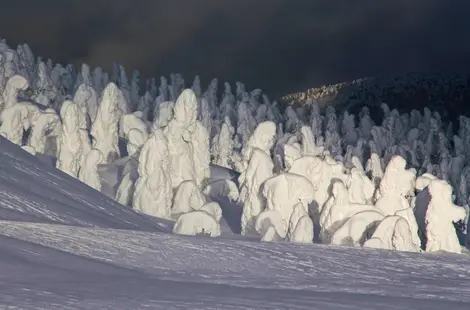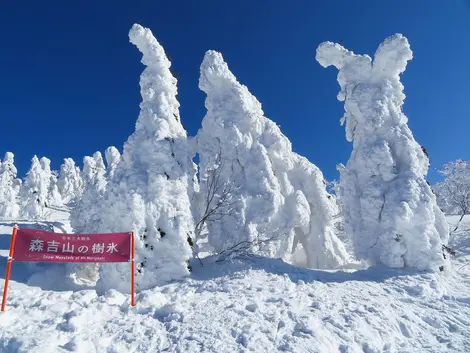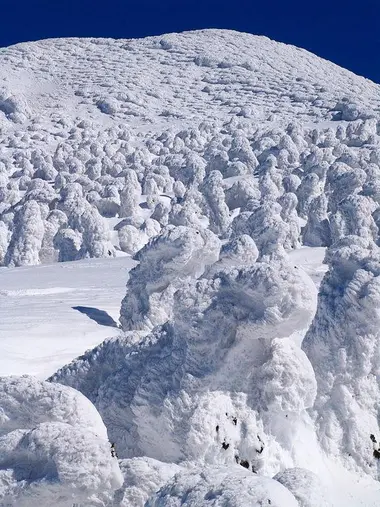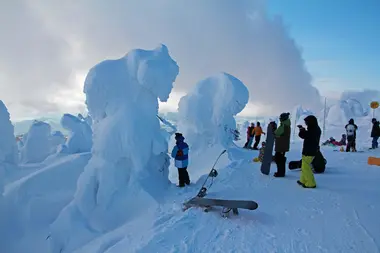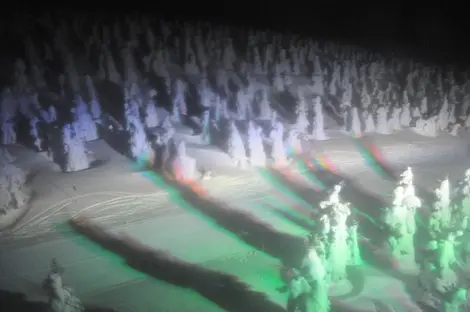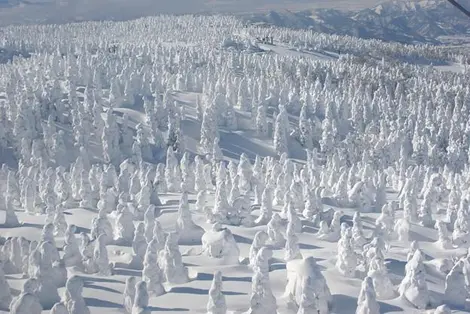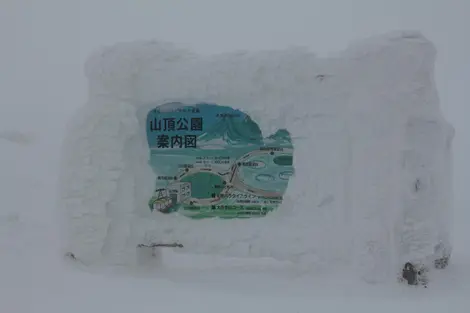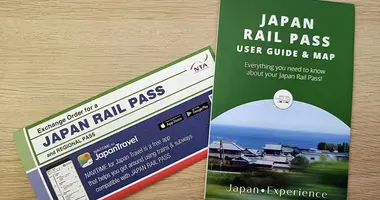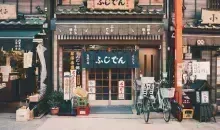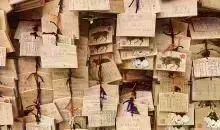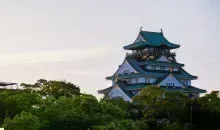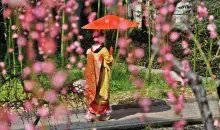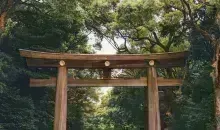Where to see the Snow Monsters of Japan?
Admire snow monsters in the Japanese mountains
The formation of "Snow Monsters" is due to an exceptional climatic phenomenon that occurs only at the peak of certain Japanese mountains. These trees completely covered with a layer of icy snow are as amazing as they are magnificent!
"Snow Monster" in English or "juhyo" in Japanese is the fabulous attraction of winter in the Japanese mountains.
But you still have to know where to go to flush them out! First, you need some very special weather conditions, a mix of cold and wet currents, very strong winds, and temperatures dropping below -10° or even -20° from January. The phenomenon appears above 1300 meters of altitude on a particular variety of trees of the Pinaceae family, the Aomori Todomatsu, which is found in a large part of Tohoku, all the north of the island of Honshu.
All the conditions are met for the glaciation of the trees to appear and for you to lay your eyes on these incredible natural sculptures which take on all the more amazing shapes than the last.
Some will see human forms, a procession of zombies, fantastic animals, monsters from video games, or Japanese "yokai" legends and company.
Plan your warmest clothes and all the equipment to face the frosts of winter, especially since in the mountains the weather changes very quickly.
So here are the best places to go and discover these Snow Monsters and let your imagination grow.
Mount Zao (Yamagata Prefecture)
It is the essential place for snow monsters, their favorite playground! Every winter, posters pop up in train stations and travel agencies to extol the merits of Japan's most beautiful snow monsters.
And we must admit that in Zao, you will be amazed. 45 min by bus from JR Yamagata station, you arrive at the ski resort of Zao Onsen, at the foot of the slopes, then you take a cable car which will take you up to 1661 meters in altitude in 20 min.
As you progress you see the landscape evolve before your eyes, the trees overlapping more and more until they are just huge white shapes. It's guaranteed dazzling, not because of the sun (although, take your sunglasses!) but in front of these magnificent trees all covered in white.
When you are right in front of them, you remain in contemplation as in front of the greatest works of art of the Louvre Museum. Of course, if you are a skier, you can go down the large piste surrounded by snow monsters for an unforgettable experience!
As soon as night falls, the snow monsters near the cable car station are illuminated and you can book a snow groomer for a ride under the stars!.
Mount Hakkoda (Aomori Prefecture)
Since the variety of trees that turns into a snow monster is "Aomori todomatsu" you are in the right place to appreciate them perfectly.
Indeed, 60 min by bus from JR station in Aomori city, a cable car takes you 1324 meters above sea level in 10 minutes, to the top of Mount Hakkoda. Aomori Prefecture is recognized as being the snowiest place in the world each year, with an average accumulation of 8 meters of snow each winter. The conditions are harsh at the top of the mountain, which is why the yuki monsters are beautiful and numerous, but the storm rages so often that it is haphazard if you can appreciate them in good conditions.
Don't go there in jeans-basketball because you won't even get out of the cable car station! But you can take out your ski clothes and your snowboard to hurtle down the 5 kilometers of superb descent.
Hachimantai (Iwate Prefecture)
Hachimantai is a set of volcanic mountains, which, unlike the first two places, is much less easy to access. The discovery of snow monsters will only be more beautiful after your efforts to reach these hidden treasures. From JR Morioka station, you have to take the bus for an hour, then take a chairlift and finally 5 kilometers of walking will be necessary, on snowshoes or cross-country skis.
The area here is very large and you walk in the middle of natural ice sculptures for a good while, being more, much quieter to appreciate the show. It is still advisable to hire the services of a local guide to take you there.
- Read also: The best rotenburo in winter
Mount Moriyoshi (Akita Prefecture)
To reach the snow monsters of Mount Moriyoshi, you must take a train on the Akita Nairiku Minor Line from Kakunodate, connecting with the Akita Shinkansen Line. This small line meanders in the middle of the magnificent countryside in all seasons. Then you will go to the ski resort of Ani. A special ticket is offered including the train journey, the taxi to reach the station, and the chairlift ride.
At 1200 meters above sea level you can already make friends with the snow monsters. A 30 min walking path is even laid out so that you can meet as many as possible. And like everywhere, it is possible to ski down the slopes. The following video, filmed with a drone, shows you the places in an original and panoramic way...
Mount Yokote (Nagano Prefecture)
To mix the pleasures, go to Nagano, after taking the Nagaden line (from the city of Nagano ) to its final destination of Yudanaka, then 50 min by bus to the Shibutoge ski resort located at 2172 meters altitude.
You have 10 min of the chairlift and you are at the top of the slopes to appreciate the local snow monsters, a little less impressive than those before, but still worth the detour, especially if on the way you will say hello to the famous monkeys who bathe in the warm waters of Jigokudani. It's so close that you shouldn't miss it!
Hyunosen (Hyogo and Tottori prefectures)
This is the only spot where you can see snow monsters outside Tohoku. And it's even so specific that the place is nicknamed the Zao of the West. Zao being, you will understand, the ultimate reference! Here, the ski resort is called Wakasa Hyounosen, 25 min by bus from Tottori, very accessible.


